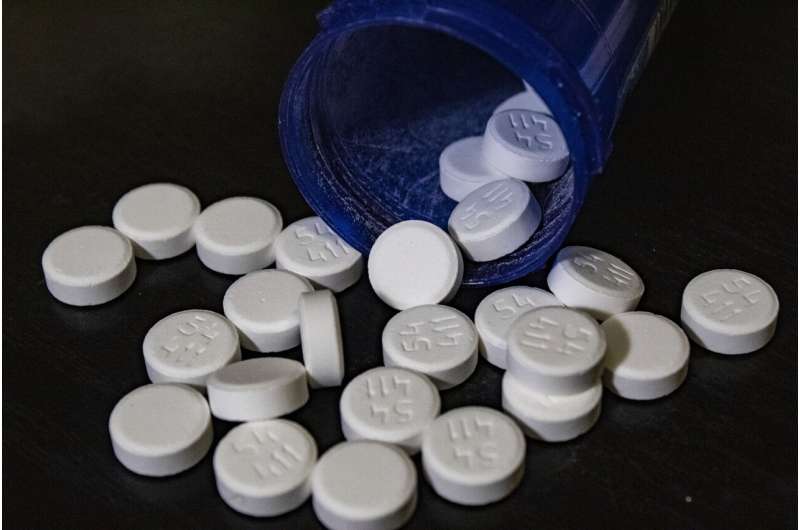Buprenorphine use remained stable during first year of pandemic

The number of active prescriptions for the opioid disorder treatment drug buprenorphine remained constant during the first year of the COVID-19 pandemic, but the number of new prescriptions for the treatment was far below what would normally have been expected, according to a new RAND Corporation study.
Examining prescription drug records from across the U.S, the study found that the number of new treatment episodes started between March 2020 and December 2020 were more than 17% fewer than what would have been expected based on patterns from the previous year.
This occurred despite emergency policies intended to make it easier for the drug to be prescribed. The finding are published in the Journal of General Internal Medicine.
"While policy efforts may have been successful in maintaining existing patients in treatment, that success did not extend to individuals not yet in treatment," said Bradley D. Stein, the study's lead author and a physician scientist at RAND, a nonprofit research organization. "We do not know why the number of patients starting treatment dropped so dramatically, although disruptions caused by the pandemic likely contributed to the trend."
The isolation and stress wrought by the COVID-19 pandemic has resulted in greater rates of drug use and misuse, mental health and substance use disorders, emergency department visits for opioid overdose, and more fatal overdoses in 2020 than in any prior year.
There also were substantial disruptions in the delivery of outpatient care in the U.S., with outpatient medical visits declining more than 50% in the months following the declaration of the public health emergency in March 2020. As a result, there have been concerns about disruptions in treatment among those receiving medication treatment for opioid use disorder.
After the declaration of the public health emergency, federal and state governments relaxed regulations regarding buprenorphine treatment, such as no longer requiring in-person visits to start buprenorphine treatment and enabling payment parity for telehealth services.
To better understand patterns in the use of buprenorphine in the months after the declaration of the COVID-19 public health emergency, RAND researchers examined records that capture 92% of prescriptions filled at U.S. retail pharmacies, identifying buprenorphine prescriptions filled between March 2019 and December 2020.
Researchers examined how many buprenorphine treatment episodes were initiated, how many episodes ended in the months following the declaration of the public health emergency in 2020, and how those numbers differed from what was observed in the same period in 2019.
The study found that the greatest discrepancy was in the first stage of the pandemic during 2020, when the number of newly initiated treatment episodes was 19% below the expected number of new episodes.
In addition, the study found that the number of buprenorphine treatment episodes that ended between March 2020 and December 2020 was 16% fewer than expected.
"The decreases in new prescriptions were compensated by substantial decreases in the number of individuals ending their buprenorphine treatment episodes, compared to what would have been expected based on the comparable period in 2019," Stein said.
Overall, treatment with buprenorphine increased slightly during the study period.
Researchers say that future focused efforts are needed to enhance access to buprenorphine treatment and engage individuals who may benefit from the treatment.
More information: Bradley D. Stein et al, Buprenorphine Treatment Episodes During the First Year of COVID: a Retrospective Examination of Treatment Initiation and Retention, Journal of General Internal Medicine (2022). DOI: 10.1007/s11606-022-07891-w



















